Device ventilation system - the appointment, basic and
Living in the countryside, you practically do not think about ventilation, sometimes it is enough for the house to make the simplest construction. Another thing is when you have to spend working time in city offices, whose windows overlook the road. In this case, the opening of the window not only does not give access to fresh air, but, conversely, only aggravates the atmosphere in the room.

Purpose
Today it is impossible to imagine any production without ventilation, as well as premises in an apartment or house.
Its use is quite extensive, and the equipment, although different in diversity, but in reality consists of three main groups that are involved:
- the creation of air flow;
- air treatment;
- air distribution throughout the premises.
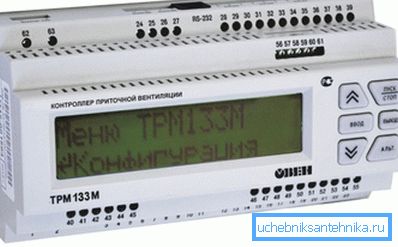
Separately, additional components for ventilation systems should be identified, which can be considered as an integral part of them, which can negate the side effects of the work:
- fire dampers;
- heat insulation;
- silencers.
Tip: all complex ventilation systems must be equipped with automation.
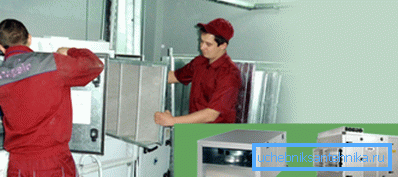
Structure
Equipment depends on the type of ventilation. For example, the intake consists of elements that:
| Create air currents | The main element of all mechanisms is a fan, which can be different, and used for such ventilation systems:
With their help, it is possible to create air curtains, and they can be installed on roofs and in ventilation ducts. |
| Process air | These systems can be separate and form part of larger mechanisms:
|
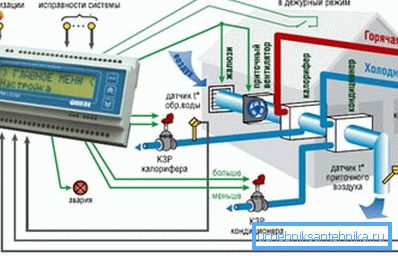
For the distribution of air flow using the following parts of ventilation systems:
- Air distributors:
- nozzles with nozzles;
- lattices;
- perforated panels;
- ceiling lamps;
- slot devices.
- Air channels.
- Devices of the regulating and locking type - valves, diaphragms.
The main elements of the ventilation system
As with any design, its proper operation must be ensured by its individual elements, which can work independently or be synchronized with the rest through automation:
- Air intake grille The first accepts clean air coming in from outside, its price depends on the size and material. Most often it is rectangular or round, there are also oval or custom. Their task is not only decorative, but also practical - to protect the ventilation system from various pollutants, as well as precipitation.
- Air valve It is designed to control air flow and also prevents outside air from entering the system if it is turned off. Especially needed during the cold season, otherwise freezing air and sleet will fall into the house and apartment. You can install it easily with your own hands.
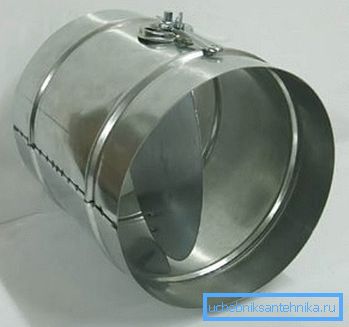
Most often, in fresh air ventilation systems, the valve is synchronized on the valve by means of an electric drive, automating its control. If the heater turns on - the valve opens, when it turns off - it closes.
- Air filter an important element of the system, protecting it from fluff, dust, insects and dirt. Typically, coarse scrubbing is used, capable of trapping particles as small as 10 microns in size. The filter material in this case is acrylic. If necessary, increase the protection of the ventilated building instruction recommends installing a fine filter that delays particles up to 1 micron in size, as well as extremely fine filters that do not allow particles to drop to 0.1 microns.
Tip: keep track of the device and clean it from debris and dust every month.
We recommend to install a pressure sensor for diagnosing the filter, which is capable of monitoring the difference in air pressure at the inlet and outlet of the ventilation system.
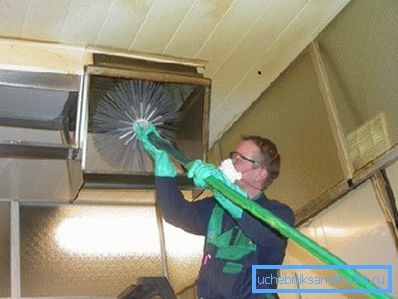
- Fan used in all forced air exchange systems and static pressure in the ventilation system. It has two main parameters - the volume of air supplied and pressure. By design, they can be axial and centrifugal.
The first received approval from customers due to its reliability and high performance. The disadvantage is that they create a low total pressure, due to which the speed of the air flow in the winding ducts decreases significantly. In this case, we recommend the use of radial models of fans that can create high pressure flow.
Tip: the latest models of European manufacturers of ventilation equipment are pleased with low noise and small dimensions.
- Air ducts designed to distribute the treated air through the building after it leaves the silencer.
They are united in a network consisting of:
- turns;
- adapters;
- tees.
Their selection is made by:
- cross-sectional area - it depends on the required air exchange, which is determined by calculation, as well as on the maximum determined air velocity;
- form - round or rectangular, less oval;
- stiffness - flexible, semi-flexible and rigid.
Tip: during operation, the permissible speed in the ventilation system must be observed, otherwise the duct will become a source of noise.
Rigid air ducts are made of galvanized sheet, they can be rectangular or round. For certain conditions, they can produce stainless steel.
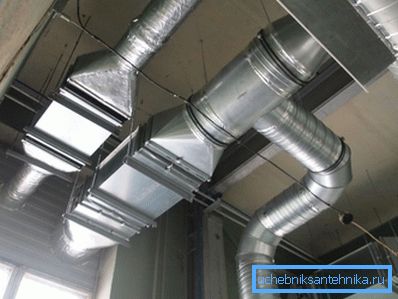
Semi-flexible and flexible air ducts are made of multilayer aluminum foil, they are round in cross section, which is facilitated by a frame made of steel wire, twisted into a spiral. This design is convenient for transportation, as it can be folded "accordion".
The disadvantage is high aerodynamic resistance due to the uneven inner surface, so they should be used on projects of small length.
Additional
| Heaters |
|
| Coolers |
|
| Recuperator | Designed for mixing two streams of air - coming from the outside and returning from the room. It helps to reduce the cost of heating water during the cold season and to reduce the temperature of the air in hot weather. |
| Muffler | A necessary part of the fan that controls the noise level in order to increase the comfort in the room for work or rest. The source of noise in the fan is any oscillatory motion:
Sound attenuators are divided into:
Their main advantage is the surface, lined with sound-absorbing material. |
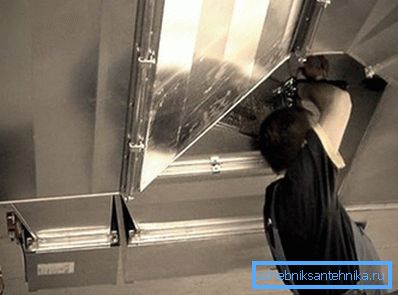
Conclusion
When designing a ventilation system, it is necessary to understand not only its purpose, but also the device. Then it will be easier to know where, what and where elements to install, and for what they will be used in the future. Conventionally, we can relate some of them to the main ones, others to additional ones.
The video in this article will help you find additional information on this topic.